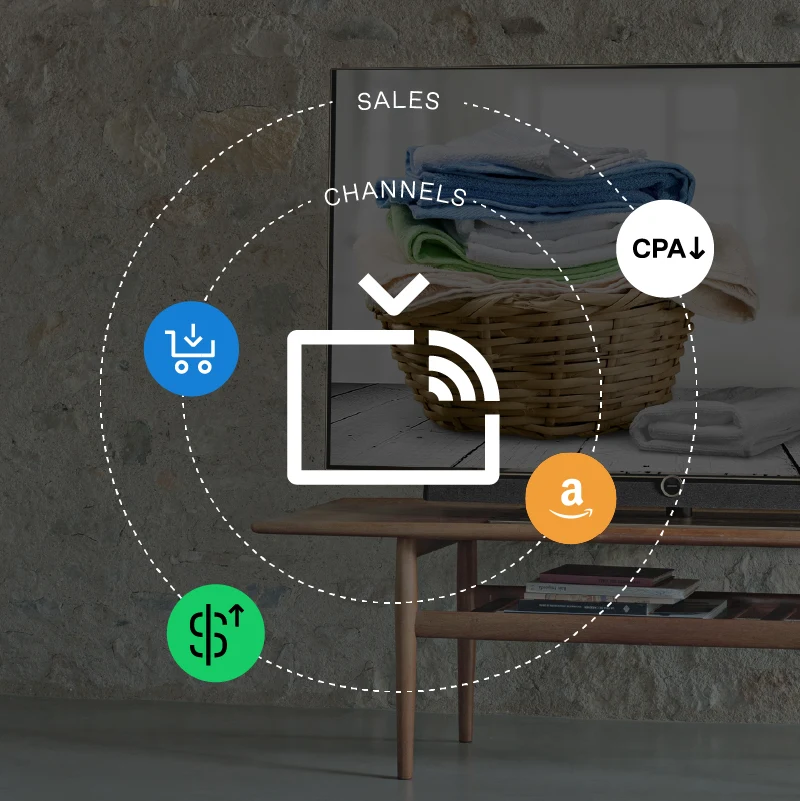
Why Linear TV Remains an Effective Advertising Strategy
A version of this was originally featured on Adexhanger.
In the age of streaming services, it's easy to overlook the enduring power of linear TV. While platforms like Netflix and Hulu have captured a significant portion of the market, traditional television still reaches a massive and valuable audience. Let's explore why linear TV remains a vital component of any effective advertising strategy.
According to Nielsen, over 70% of American households still subscribe to traditional cable or satellite TV. This represents millions of potential customers that streaming-obsessed advertisers are missing out on. Furthermore, most ad-supported streaming services still lack the reach of linear TV (or the audience that can be attended from cable subscriptions). For example, whilst Netflix boasts over 80M subs, only a fraction of those are ad-supported today, and as such largely overshadowed by the ~58M Pay TV subscribers. Add to this increasing subscription fatigue, and the reach of streaming TV is further decimated (relative to linear) due to fragmentation.
This insight is reinforced by our ongoing conversation about convergent TV. As discussed in our earlier piece, As Linear’s Definition Gets Muddier, It's Time to Talk Convergent TV, the blending of traditional and digital TV opens up opportunities to reach audiences on multiple platforms, maximizing campaign effectiveness.
And in the world of TV advertising, reach and scale is the true name of the game. MediaPost reported that after observing a substantial viewership boost quarter over quarter throughout the last three years, the share of time spent streaming leveled off for U.S. households in Q1 2024 (coming in at 57%, a slight drop from the 58% reported in Q3 2023). This suggests that streaming may be reaching its saturation point, while linear TV continues to hold a significant share of viewership.
Additionally, the Nielsen Gauge report highlights that while streaming continues to grow, its reach remains limited compared to traditional TV. Incorporating linear TV into your advertising strategy remains essential to tap into its vast audience base.
This dovetails with our recent discussion on how much ofCTV ad inventory is still controlled by linear TV. The reality is that 25% of CTV ad inventory is still exclusively available through linear channels, highlighting how much advertisers stand to miss out on by focusing solely on digital streaming.
Linear TV is also really good at delivering contextual advertising. When a commercial for a new action movie airs during an intense sports broadcast, it creates a natural synergy between the content and the ad, making viewers more receptive to the message. This level of contextual relevance is difficult to replicate in the fragmented world of streaming. And linear TV often carries the more exciting (and as such, contextually rich) content such as breaking news, sports, and award shows. When major news stories unfold, viewers turn to traditional television for reliable coverage and commentary. Similarly, live sports events continue to draw massive audiences, creating powerful moments for advertisers. Multiple studies by the IAB have proven that contextual targeting significantly enhances ad effectiveness and increases viewer engagement, reinforcing the power of context in traditional TV advertising
According to Get The Score, in the first half of 2024, 86.93% of all ad time on TV was viewed on Pay TV or Broadcast, with only 13.07% on streaming platforms. This data underscores that time spent watching content does not necessarily equate to available ad inventory, a crucial point that advertisers need to keep in mind.
The key to success in the digital advertising landscape lies in embracing a multi-channel approach. While streaming offers valuable tools, it shouldn't replace the proven power of linear TV. By leveraging both platforms, advertisers can reach a wider audience and achieve greater results.
In short, linear TV remains a vital component of the advertising landscape. Its wide reach, contextual relevance, and ability to capture live events make it an indispensable tool for reaching a massive and engaged audience. By understanding the strengths and limitations of both linear and streaming TV, advertisers can develop more effective campaigns that resonate with their target market.

Philip Inghelbrecht
I'm CEO at Tatari. I love getting things done.
Related
Today, 25% of CTV Ad Inventory Can Only Be Purchased Via Linear TV
Only a quarter of CTV ad inventory can be purchased through just linear TV, yet linear TV still accounts for over half of all viewing. As a result, it is important that advertisers consider both linear and streaming when building out their media plans.
Read more
How a DTC Brand Used Tatari's TV Advertising to Drive Revenue and Business Outcomes on Amazon
An eco-friendly cleaning product company found that TV advertising boosts Amazon sales, as confirmed by Tatari's analysis. This approach revealed that TV not only drives direct sales but also enhances customer acquisition across channels, underscoring its importance for DTC brands.
Read more
Finding the Sweet Spot: Optimizing Ad Frequency for Maximum Impact
In TV advertising, hitting the right frequency is key. Tatari’s data-driven tools pinpoint this sweet spot to maximize effectiveness, boost ROI, and avoid waste. Discover how to fine-tune your ad strategy for optimal impact.
Read more


